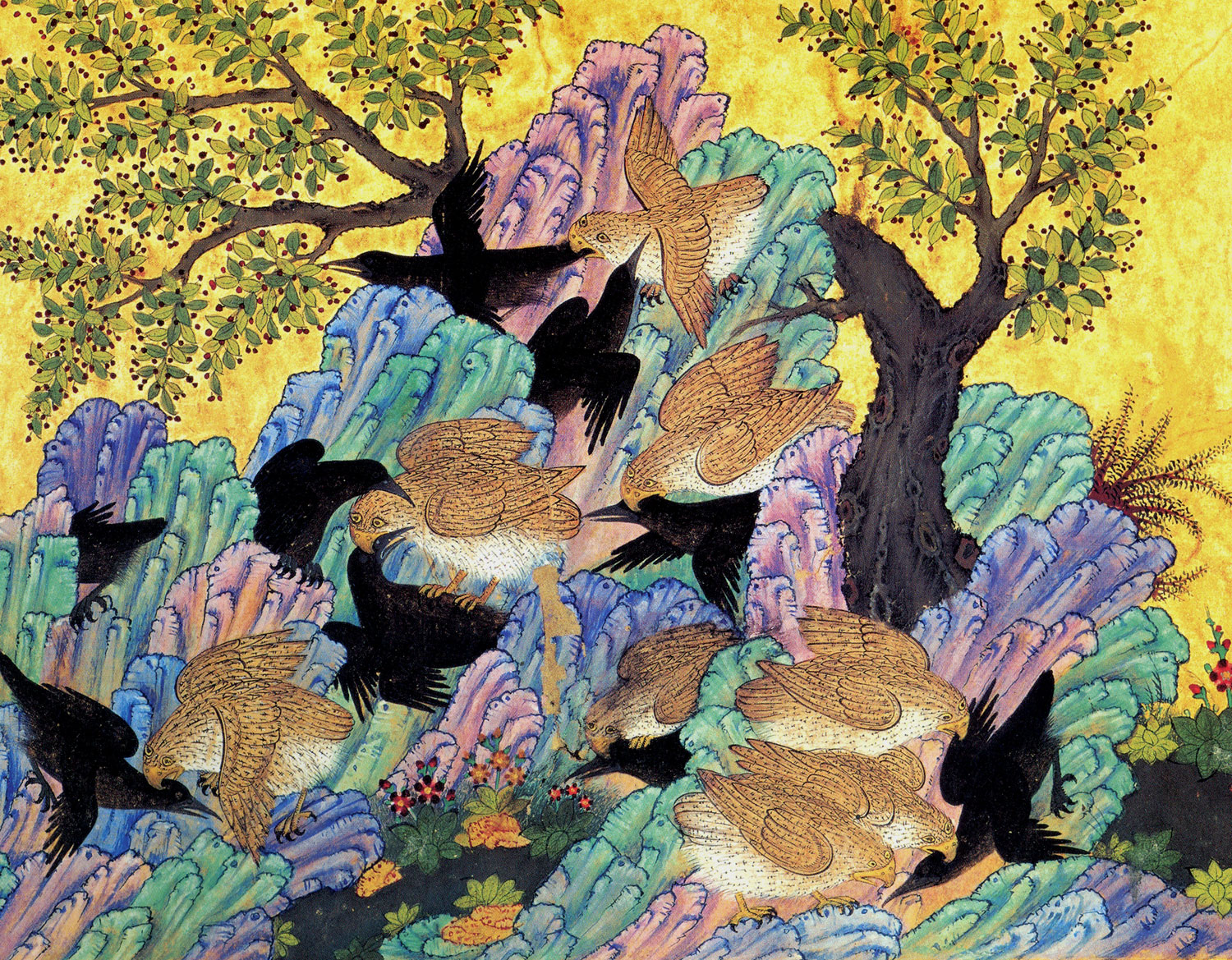Today, the word “nature” usually means trees, fields, wild animals and other things normally found in greater abundance outside the city than in it. This is too bad, because there was a time when nature meant something much larger than that, namely the object of scientific study, the universe in all its vastness, both macro and microscopic, within us and around us. For science, nature is also a test, because all speculation, meaning all attempts to order knowledge, have to be checked by observation. We could say that there are always two tests of any hypothesis—nature and history. Every new understanding of the world has to be measured against both natural facts and the existing state of scientific knowledge, although the latter is necessarily in constant flux. I suggest that the case is the same for art, although science and art have a complementary and opposite balance of these two measures. Science gives the priority to nature, and usually resists any talk of how social and political contexts determine what can be seen; art has more or less accepted that all knowledge of the world is historical through and through, and that objective reality is a doubtful concept. To accept both of these antagonistic positions at once is the precondition for any useful thinking about the relations between art and science, but what interests me is that even though abstract art may not depict landscapes or figures it still has to face the test of nature. The view that art, as a characteristically human activity, follows its own laws, independent of nature, is an attractive one, and geometric abstraction is one expression of it, but I want to suggest that the idea that any human activity can be separated out from nature is just a leftover of the religious notion that the soul is unconditioned, autonomous and free. Geometry in abstraction is an idealism, in the strongest sense of the word.
The straight line, and everything it enables, such as right angles and regular geometric figures, is an astonishing invention. The straight edges of crystals might have been noticed by our stone tool making ancestors, and some grasses have straight stalks, but otherwise straight lines in nature are very rare. As I sit and look out at a human environment entirely built on straight lines and regular curves I can’t help but admire the imagination and will that has cut through the irregularities and digressions of nature to impose something new and unprecedented on the world. A building, or a room, with straight edges, square corners and flat walls, is a kind of miracle—though by now it might be even more miraculous to see it that way—and it is the very image of how human society has distinguished itself from everything else, to make a safe space for the body and a formative, limiting space for the mind. Interesting that a room, such as I describe it, is also the model for what scientists call Newtonian space, an empty box constructed on three perpendicular axes. However, science now knows that Newton’s empty box is just a convenient simplification that allows us to track our positions on the earth accurately enough for normal purposes, that in reality there is no such space. Space is an effect of the relative motion of objects—there is no empty space through which all objects move. Yet in countless ways we have extended that three dimensional grid, and find it very useful in our travels in both space and time. Abstract art has an interest in finding an exit from the now enormous house of human culture, and I want to propose an anthropology of art to explain why.
Presumably human sociability, which means, among other things, division of labour, had a powerful survival value. Every animal is outwardly oriented, facing the world from which they must draw what they need to survive, where threats and challenges abound. Human intelligence—the ability to perceive cause and effect, to plan the future, to visualize relations in space, to remember and communicate, and to do all these things collectively, on a somewhat higher level than other animals can do—obviously gave an advantage, but as human beings became more secure in their mastery of the material world, they devoted more energy to elaborating their societies. There are plenty of animal societies, but I doubt if any of them are as internally articulated as ours, because most of what preoccupies us on a daily basis has nothing directly to do with survival, or even recognizes our environment at all. The human world has become, to borrow a term from Marx, “second nature,” an all enveloping realm of infinite particulars which demand most of our physical and psychic energy. All that matters to human beings are human things, and this only seems to be a tautology because it is so difficult for us to find a perspective outside of the human.
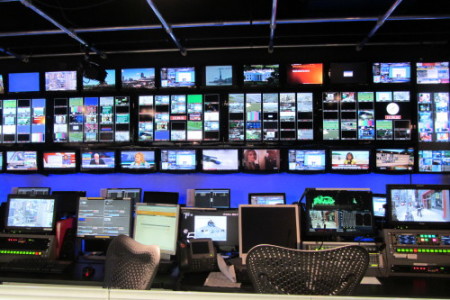
City tv control room Doors Open Toronto 2012 (source).
Scientists have recently proposed that the current geological era should be called the Anthropocene because of the enormous impact of human activity on the biosphere. This seems a reasonable idea, but becomes something else when the art world gets hold of it. Recently a European museum dedicated a year’s worth of programming to the concept, with the thesis that “Our notion of nature is now out of date. Humanity forms nature.” From measurement of human impacts on the earth we have moved to an extravagant philosophical claim. I find it dubious in the extreme. We have hardly encircled nature, and remain surrounded by forces over which we have absolutely no control. The biosphere itself is very small and fragile and far from being the totality of nature. But there’s no doubt that our consciousness is almost totally possessed by our own social inventions—in no particular order of importance, the family, the market, the nation, the couple, the school, the church, the profession, the team, the corporation, the tribe, the village, and on forever, and all of these forms have associated discourses or images of the world, which also occupy our daily thoughts. These social forms enable us to secure food, clothing and shelter, and all the difficulties we face in acquiring those necessities reduce entirely to human relations. Or so it appears. For us, nature, or objective reality, only exists in and through the social mechanisms that appropriate it, but that’s our limitation, one that becomes more evident as the environment withers around us. In my view, science and art are the two most important opportunities to turn away from this self-sustaining and self-defining system to face the world outside—but of course not all science and not all art.
For the purpose of survival, the most important capacity is to recognize what we don’t and can’t understand. Luckily for the survival of science, there will always be plenty of that, but collectively we are constitutionally unable to make such a recognition. Our greatest blindness is to see everything in the universe as to how it relates to us—but then how could the human monkey do otherwise? Any other perspective would be irrational, since rationality is precisely a fundamental orientation toward human needs, human history and human knowledge. What we don’t understand need not and should not concern us—until it hits us in the face. l have no idea what surprises nature has in store for us as a species, but as an artist I am very interested in what lies outside of our incessant conceptualizing. The now globally ubiquitous conceptual or discursive forms of art are by definition completely social, and non-conceptual abstract art as a critique of this norm is analogous to that very nature that surrounds us, that exceeds our understanding and eludes our mastery.
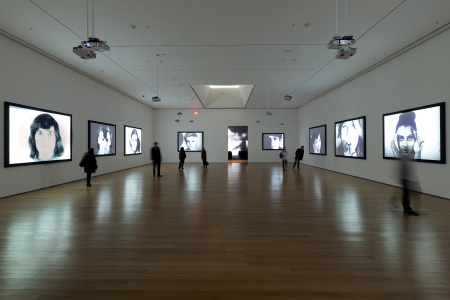
Installation view of Andy Warhol: Motion Pictures at The Museum of Modern Art, 2010 (source).
Art exists entirely within the social realm, since even to see an object as art requires some social training, namely an understanding and acceptance of conventions, and abstraction has made this fact more evident by separating art from many of its social roles. But the entirely interior space of art has a hole that lets in the air—sometimes the cold wind—of the world outside. There are techniques for enlarging that hole and keeping it open, and in abstract art many of them can be grouped under the heading of automatism, but automatism is not so well understood when it is seen as a way to access “the unconscious,” or some other merely human space. Likewise, what we feel when we get near enough to that hole to catch a glimpse of a larger realm used to be called “the sublime,” but today the term is never used. Since nature is bigger than us our relationship to it involves an inevitable measurement of relative power, and discussions of human weakness are easily associated with right wing politics and religious conservatism. As a species we have a true genius for thinking that gap out of existence, for walling off our own space with conceptual bricks, but those efforts fail when nature moves, as it always must. I hope the reader will grasp that I am reaching toward a politics of abstraction adequate to our time, when human life on this planet poses a lot of problems, both for our own species and the larger system. Note that I do not make millennial claims about the collapse of civilization or species extinction, but rather observe that respect for the otherness of nature, its independence from our needs and desires, is self-evidently a requisite for survival; likewise a respect for the otherness of art has to be basic for any valid criticism. I believe that conceptual or discursive art, and its theoretical backstory, which assimilates art entirely to social purposes and struggles, does not meet the measure of our time.
Human beings are extraordinarily busy creatures, constantly building and tearing down, transforming the world at a rate far faster than any natural process. Yet the speed of our labours is nothing compared to the rapidity of our thought. The speed of thought must have evolved to exceed the reaction time of animals—we could draw conclusions from observation, make plans and act before lunch got away— but the movement of our minds is on a completely other scale than any aspect of nature. The physical motion of living things is slower, the growth and development of any organism slower still, the capacity of the environment to neutralize all the toxins we’ve dumped into it yet slower, evolution still slower, and geological time massively slow, in proportion as its productions are also massive. Meanwhile the human mind can range from the Big Bang to the end of time in an instant. The disproportion between what we can see, understand and know on the one hand, and what we can do, on the other, is so extreme that it doesn’t bear contemplation, even though it explains a lot of the political history of the modern period. The brain has an overcapacity, and once a certain level of mastery of nature was reached, it didn’t have much to do—and so culture followed, with its ever increasing complexity, in which the rapidity of one individual’s thought is constantly tested against another’s. Yet even though an individual can quickly spot a collective danger, since all action has to work through many social mediations, as a species we can’t respond quickly enough. Singly we might be very smart, but collectively not so; individually agile, but as a species our reaction time is too slow. In any case, our intelligence has become almost entirely a social intelligence, and it really doesn’t pay much attention to anything outside of the human. The measure of a successful life is nothing other than the sum of successful social relations— with friends, family, professional colleagues—but it’s not at all certain that the sum of such lives adds up to a successful species. Since the winding together of the survival traits of intelligence and sociability makes it very difficult if not impossible to effectively respond to environmental challenges, there is nothing to do but carry on and hope for best. This is not a religious kind of fatalism—a belief that god will take care of everything—neither is it optimistic, but realistic about human limits. We simply may not be adequate to the crisis we ourselves have unwittingly created, and that fact has some bearing on abstract art.
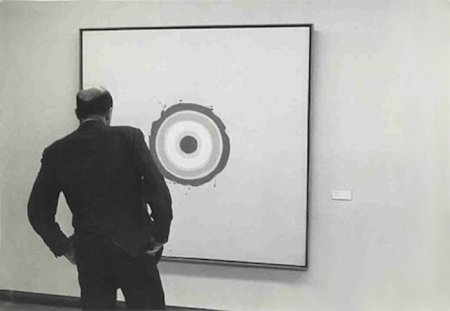
René Bouché , Clement Greenberg, 1955, Oil on canvas, National Portrait Gallery, Smithsonian Institution (source).
Abstraction is always difficult to evaluate; since the beginning, it has mortgaged its importance and value to the future. This is a weakness. After all, if its quality is real, that should be evident right now, today. But this is not the case—we really don’t know how to rank abstraction relative to the great productions of the past, or to judge it in the present—neither specific examples nor the movement in general—and the most thoughtful and serious artists and critics will acknowledge the fact. The abstractionists of the early twentieth century were not much worried about how to evaluate their art. They thought that its status would be guaranteed by a transformed society, one in which art had a clear and acknowledged function; in other words, they were waiting for a new context that would supply the meaning that they themselves were unable to specify. This kind of hope, that time will prove the work, seems to me to be constitutional of abstract art. All abstraction has something of the character of a leap in the dark, a chance taken, and hence of an evaluation yet to be made. So at a moment when it’s not clear how much future there is actually going to be, abstract art’s faith in the future could be simply irrelevant.
What has actually happened is that the future oriented or even utopian element in abstraction has collapsed down into the present, and become something smaller and more immediate but also more compelling. Discursive or conceptual art, with its now normative social engagement, has taken over the utopianism of early abstraction, striving to improve the human world, necessarily with an idea as to what improvement should be, and deferring to a future evaluation from art history, while abstract art has learned from experience that life is as good now as it ever was, and will not necessarily get any better. Our inevitable existential orientation toward the present means that we have a right to demand of art that it prove its value now, without excuses or postponement; of abstraction that colour and form give a real and demonstrable pleasure, but one aspect of that pleasure must be a kind of openness or lack of resolution. We start with aesthetic conventions, tried and true formulas for beauty or success, and end up with an enigma. The experimental, open-ended and forward looking aspect of abstraction is not a stab at the future, it’s become a way to enhance the present, to make life something more than just a quantity of time passed.
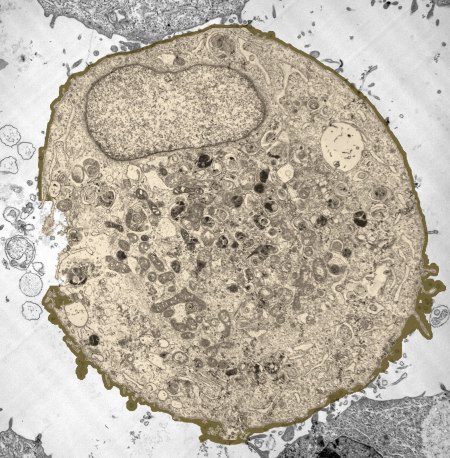
Photograph of an animal cell through a microscope (source).
A politics of abstraction cannot be restricted to political “issues,” however defined, but we do have to know what kind of art can give us a present moment both full and unfinished. Appropriately, it’s the form that matters. The great biologist Lynn Margulis has suggested that the earliest cells were colonies of symbiotic bacteria. Listening to her speak a number of years ago, as she presented a vision of the biosphere as an ocean of bacteria, I couldn’t help but recall one of Kafka’s aphorisms: “there is an abundance of hope, but not for us.” Hand wringing over the disappearance of species is very human I’m sure, but unnecessary. Species of plants and animals are forms, and as long as the sun keeps pumping energy into the biosphere more will appear. Forms, emerging and disappearing—the substance doesn’t diminish, how could it? The biosphere is one single thing, so the total amount of life is always the same. An abstract art that produces endlessly new forms from a basic principle is then a model of how the universe works, a model in motion. The nature of this analogy—whether it is a mere image or something more fundamental—cannot be decided in principle, but great abstraction tries to get hold of the germinal, it wants to be an origin. Styles and manners are less important than the capacity to invent styles and manners; specific images are less important than the ability to invent images; relationships of colour and form are less important than the origins of the same, and so on. And important for this approach is the unprovable belief that the creative faculty in human beings is one and the same with that of nature. This is not such a far out notion, for if what matters in nature is everything that lies outside of our capacity to manage or exploit, any artist will agree that the boundary between the humanly managed and the unmanageable runs right through every individual.
Even though we lay waste to the earth, its beauty cannot be diminished. And even though beauty obviously does not exist outside of our perception of it—or at least it doesn’t make any sense to talk about it as anything other than a modulation of human perception—abstraction teaches us that the real beauty of nature, and of art, is an inhuman one, that it exists without us. Can we take pleasure in contemplating the diversity, complexity and endless fecundity of a planet without us? These impossible thoughts take us to the very edge of what art can ever mean, an edge that normally we are better off to avoid. I am trying to raise the stakes for abstraction, to give it a planetary value, a politics that transcends merely human politics. Abstraction has little choice but to take a distance from the ordinary and humanly important details of life, the normal concern of all other kinds of art, and that is a very difficult problem, one that can’t be theorized away. Autonomous art must become something stronger—autopoetic art, in other words self-generating. And the pleasure offered by such art must have some feeling of the inhumanly strange—it can’t be the pleasure of recognition.
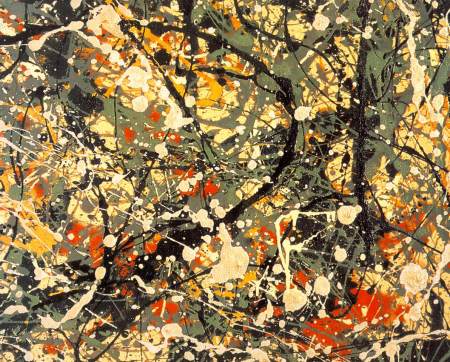
Number 8, 1949 (detail) Oil, enamel, and aluminum paint on canvas; Neuberger Museum, State University of New York (source).
In recent times the artist who most clearly took this stance was Jackson Pollock, though the existing descriptions of his work—as performance, expression, myth making, formalist decoration, obliterated figuration—all block such an interpretation. His generative method produced a different result every time, meaning that each picture has its own immanent order, and in this sense is paradigmatic for the organicist tradition in modernism. Others who have felt their way toward such an art include Arp between the wars, Rothko in 1947—the same year as Pollock’s breakthrough to the drip and pour—and perhaps the Indian modernist Vasudeo Gaitonde. But these are all just indications of what is possible, a fully autopoetic art has yet to be realized, or maybe yet to be recognized, one of the causes of which is a major theoretical failure, namely the belief that art can be produced by natural processes. The pours of Morris Louis sit on the cusp of this unfortunate development. To simply register the action of the weather or the effect of gravity is inadequate because these phenomena are external to the work. To actually be nature an artwork must make itself and have an immanent order, the more complex the more beautiful. Chance, the sensibility of the artist, objective systems (including geometry) and natural processes—and that covers a lot of the varieties of art—are all brought from outside and imposed on the work by conscious choice, all of which suggests that conceptuality—the predefinition and preformation of art from a repertoire of abstract concepts—is more fundamental in modernity than any other trait.
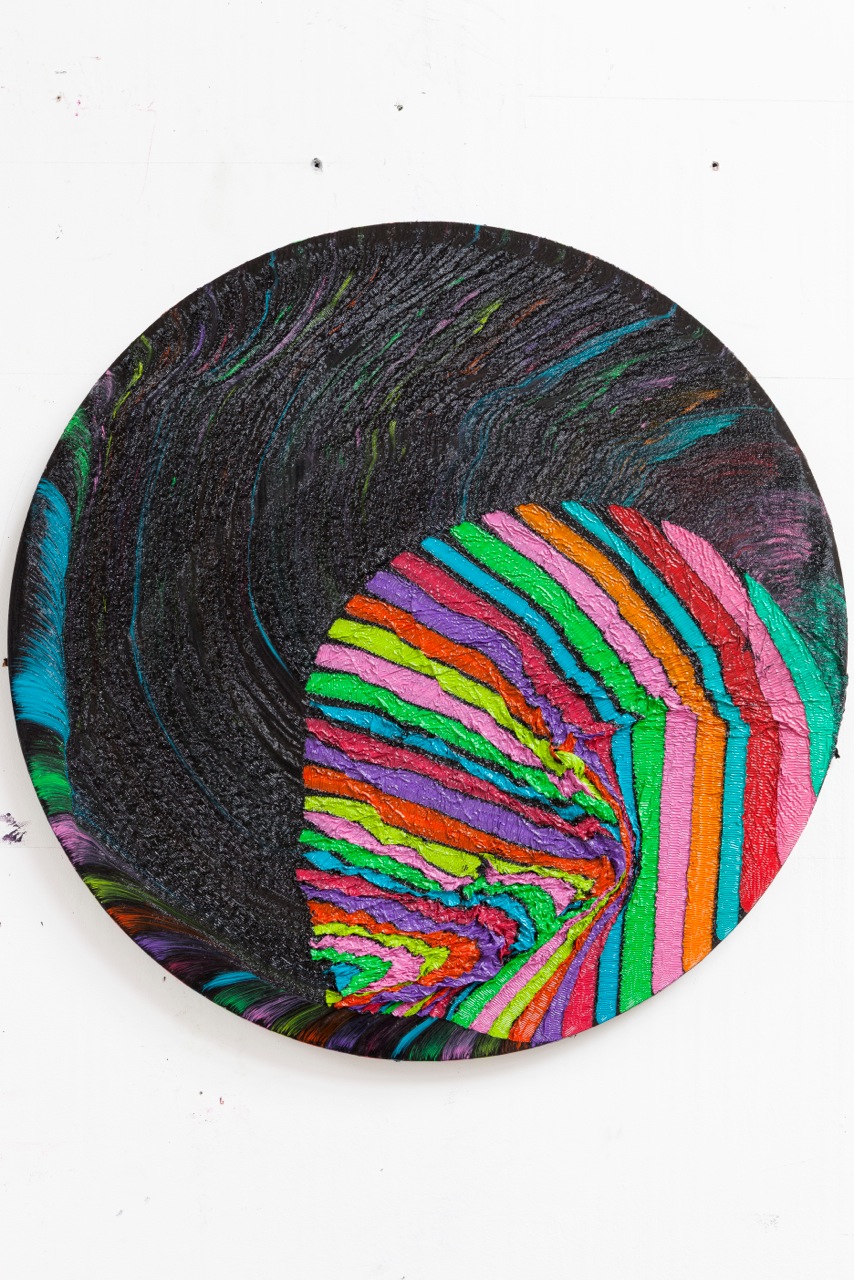
Alexis harding, Orange-vertical, 2010-2011, oil and gloss pint on MDF, 50 cm diameter (source).
The position I’m describing is pretty rare. Naturally I believe my own poured works fill the bill, but instead of proving it I’ll just say that the whole content of this essay was taught to me in the studio. Another contemporary artist working his way toward it is Alexis Harding. He sets in motion a process involving gravity and the immiscibility of commercial enamel and artist’s oils, and as it unfolds interferes with it a lot. He steers the work but it gets hold of him and steers him into its own realm of the unfinishable. Life is continuity but works of art are discrete, and as Harding’s work becomes more life-like, meaning unresolvable, his interventions become more a function of the work and less traceable back to his intentions. Experience and aesthetics are joined, with no concept necessary.
Automatic techniques are good for producing unexpected results, but our surprise hardly matters—to be genuinely other to us art has to be self-forming, and paradoxically that requires some difficult effort on the part of the artist. There’s no special value in the mark of the artist, their presence or their subjectivity, but it has to be there as something dissolved by nature or that window on reality doesn’t open. The artist can’t just sit back paring their nails while the machine rattles on. Domineering subjectivity—the artist’s good and bad ideas, their feelings and sensibility, their needs and intentions—has to be overcome from within a total system that includes both artist and work. The result should be to reconcile the rapidity of thought with an objective material process. This is exactly what music does, and if early abstractionists like Kandinsky and Klee were inspired by orchestral compositions, abstract art today can model itself on improvised music—complex four dimensional structures produced without planning or any a priori system, but dependent on practice and repetition, and requiring more than conceptual skill.
